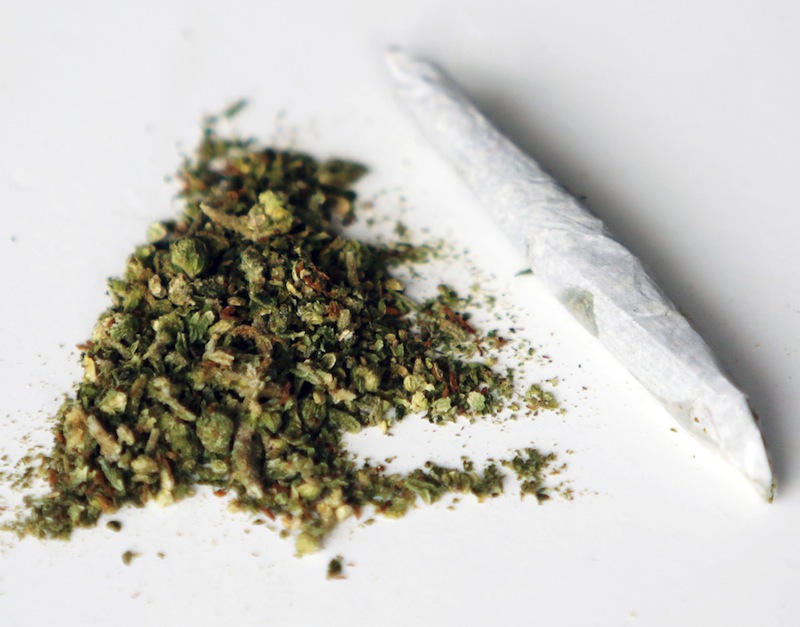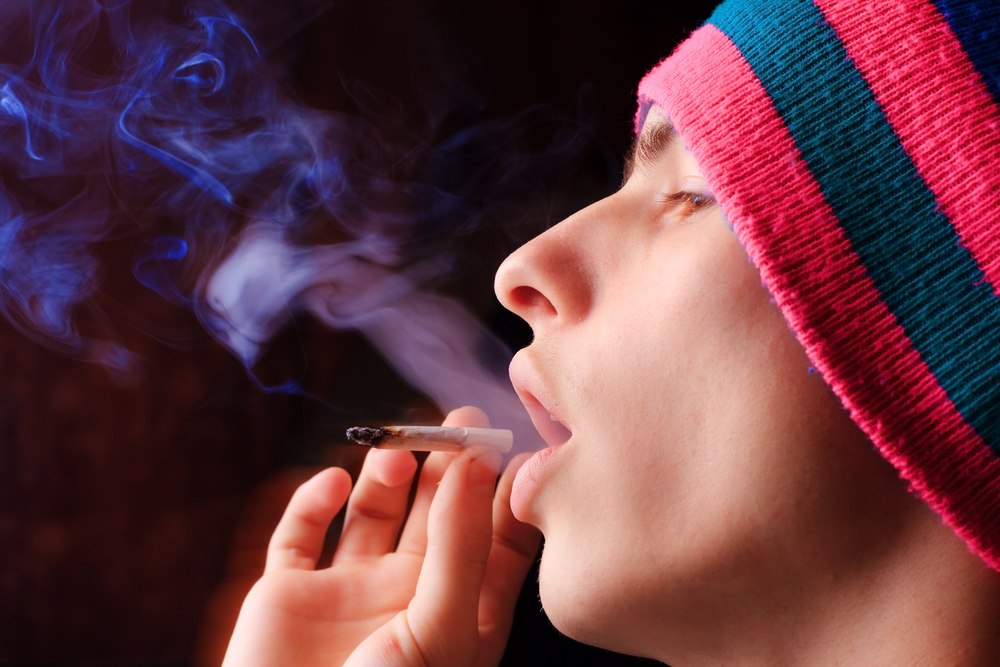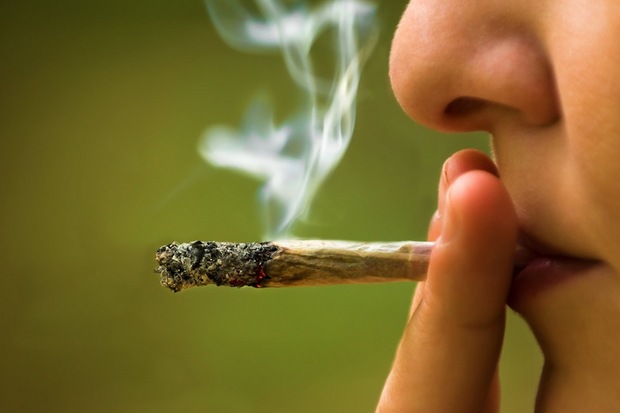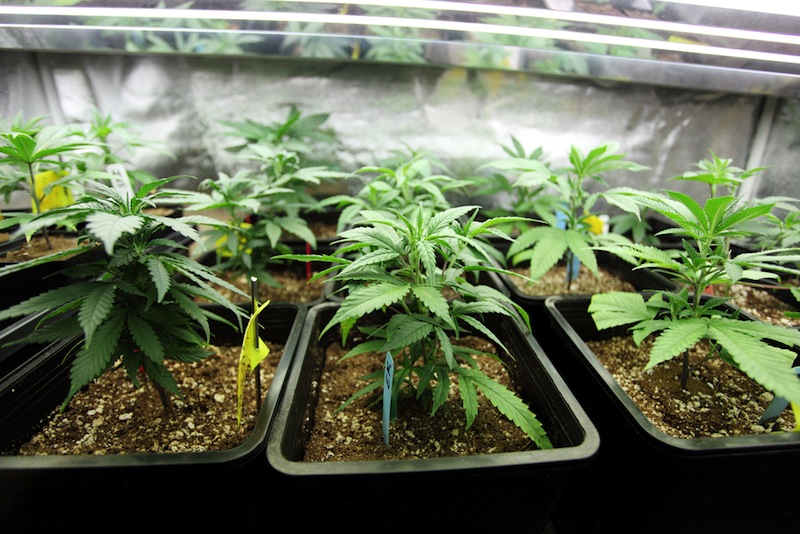25 Odd Facts About Marijuana
Going mainstream

Marijuana, the most commonly used illegal drug in America, is going mainstream. It's now legal to use marijuana recreationally in eight states — Alaska, California, Colorado, Oregon, Maine, Massachusetts, Nevada, Washington — and the District of Columbia. Pot seems poised for wider use, too: There are 21 states that now allow the possession and use of marijuana for medicinal purposes, according to the National Institute on Drug Abuse.
But just how much do you know about the wacky weed and its odd effects? How exactly does marijuana provide its high, and who discovered the effects of smoking the plant in the first place? Read on for some of the stranger facts about cannabis consumption.
Mythical origins

The hippie generation did not discover pot. But the drug's true origins remain a bit murky.
For example, one source, the Drug Enforcement Administration Museum in Arlington, Virginia, states that the oldest written references to cannabis date back to 2727 B.C., when the Chinese Emperor Shen Nung supposedly discovered the substance and used it medicinally.
But there's one problem with this putative fact: Shen Nung, if he existed, was not the emperor of China. The first emperor of a unified China was Qin Shi Huang, who was born around 260 B.C. — significantly later than the supposed Shen Nung. Nor is it entirely clear where or how this Shen Nung recorded his medicinal marijuana experiments. The earliest examples of written Chinese characters date to the Shang dynasty, between 1200 B.C. and 1050 B.C., when oracles carved symbols on bones and turtle shells. Though the story of Shen Nung permeates pot histories online, his existence seems to be more marijuana myth than fact.
Still, the Chinese deserve some credit. The ancient Taiwanese were using hemp fibers to decorate pottery about 10,000 years ago, according to "The Archaeology of Ancient China" (Yale University Press, 1968).
But the identity of the first person to discover pot's intoxicating effects is lost to prehistory.
Get the world’s most fascinating discoveries delivered straight to your inbox.
Weird ways to use hemp

The marijuana plant isn't used only for smoking; its fibers can also be made into rope or fabric. Perhaps the oddest use of hemp rope on record is as a method for transporting giant stone statues. In 2012, archaeologists created reproductions of Easter Island's statues, trying to figure out how ancient people may have moved the iconic 9,600-lb. (4.35 metric tons) heads from their quarry. Theorists have suggested everything from log rollers to extraterrestrial help for the task, but in 2012, California State University Long Beach archaeologist Carl Lipo proved that all that was needed is hemp rope.
By attaching three hemp ropes to the statue and having a team of 18 people rock it back and forth until it "walked," Lipo and his team were able to move the hunk of stone 328 feet (100 meters) in less than an hour, they reported in the Journal of Archaeological Science. Easter Islanders would have had woody shrubs similar to marijuana plants to use in making rope, the researchers argued.
Hemp versus pot

What's the difference between hemp and pot, anyway? A single genetic switch. In 2011, researchers from the University of Saskatchewan announced that they'd discovered the genetic alteration that allows psychoactive cannabis plants (Cannabis sativa) to give users a high (as compared to industrial hemp plants, which are no fun for smoking).
Industrial hemp plants are the same species as marijuana plants, but they don't produce a substance called tetrahydrocannabinolic acid (THCA). This is the precursor to tetrahydrocannabinol (THC), the psychoactive ingredient in pot. Hemp plants fail to produce this substance because they lack a gene that makes an enzyme to produce THCA, according to University of Saskatchewan biochemist Jon Page.
In contrast, marijuana plants do produce THCA but don't create much of a substance called cannabidiolic acid (CBDA), which occurs in abundance in hemp but competes with THCA for raw materials. Thus, hemp is rich in nonpsychoactive CBDA, while marijuana is chock full of mind-bending THC.
Gender-bender

Smoking up could be a very different experience for men and women, according to a 2014 study in the journal Drug and Alcohol Dependence. In research on rats, Washington State University psychologist Rebecca Craft found that females were more sensitive to cannabis' painkilling qualities, but they were also more likely to develop a tolerance for the drug, which could contribute to negative side effects and dependence on marijuana.
The female rats' higher levels of the hormone estrogen seem to play a role in these sex-specific effects. Female rats are more sensitive to the effects of cannabis at ovulation, when estrogen levels are highest, Craft said in a statement.
Pot for your pets?

People have used medicinal marijuana to ease everything from glaucoma to the side effects of chemotherapy. So why shouldn't man's best friend give medicinal pot a shot?
Pet owners are already using marijuana medicinally to help their suffering cats and dogs, according to a 2013 article in the Journal of the American Veterinary Medical Association. Most of the time, animals that ingest pot get over the effects within a few hours, veterinarians say. But in large quantities, pot can be deadly to animals.
Does your heart hate pot?

Most of the debate about the health effects of marijuana centers on the brain changes that may come with using the drug, such as the drug's association with an increased risk of developing schizophrenia and other psychotic disorders. But could smoking a bowl mess with your heart, too?
In an April 2014 study, researchers combed through 2,000 cases of medical complications from marijuana in France and found that 2 percent involved heart problems, including nine fatal heart attacks. The study wasn't designed to determine why pot use might occasionally lead to heart problems, but previous research has found that marijuana can increase heart rate and blood pressure, which could tip a vulnerable individual over into heart attack territory.
"The perception is that marijuana is a magical drug, that it's totally safe, and we can use it in medical treatment. What we don't know about are the negative effects, the potential harms," Dr. Suzanne Steinbaum, a cardiologist at Lenox Hill Hospital in New York who was not involved in the study, told Live Science at the time.
Naming traditions

A wine lover might choose between a pinot noir, a sangiovese and a viognier to go with dinner. A pot connoisseur, on the other hand, could choose between strains with names like "purple haze," "chocolope" and "green crack."
Bizarre names are a time-honored tradition among pot growers, going back at least to the 1970s, when strains such as "Maui Waui" (from Hawaii, naturally) came onto the scene. Why such goofy names? Well, one reason might be the process behind the naming decisions.
"So many times, we've finally got to the end of a strain, and we have it right there and it's done, and we're like, 'What do we call it?'" one of the co-owners of Amsterdam's DNA Genetics, a cannabis seed bank, told the LA Times in July 2014. "And we sit there, and we call all our friends and smoke. That's a brainstorm session."
It's in the air

There are certain places where a haze of pot smoke is to be expected: Grateful Dead concerts, for example, or marijuana legalization rallies. But on the streets of Rome?
Yes, according to a 2012 study done in Italy, trace amounts of marijuana are wafting through the air around the Colosseum and the Pantheon, as well as in seven other Italian cities. Researchers examined the air of Rome, Bologna, Florence, Milan, Naples, Palermo, Turin and Verona for psychotropic substances, including cocaine, marijuana, nicotine and caffeine. The scientists found all of these substances in all eight cities, with Turin having the highest total concentrations and Florence and Bologna having the highest concentrations of pot.
But even in Florence and Bologna, tourists don't need to worry about a contact high while taking in the sights. The levels of marijuana and other substances were far too low to affect human health — but researchers said they hope the findings can inform drug policy by helping to estimate drug consumption in each city.
Baby soap oops

In an unusual case, a hospital in North Carolina noticed an uptick in the number of newborns who were testing positive for marijuana in their urine, a finding that can suggest that mom has been smoking and can lead to social services getting involved. But it turns out that these babies weren't suffering from pot exposure. They were just soapy.
An investigation of the positive tests found that ingredients in several common baby soaps can cause a false positive on marijuana urine tests, researchers reported in 2012. The soaps, including formulas from Johnson & Johnson, CVS and Aveeno, don't contain pot, nor do the get infants high. A more sensitive test can show that the initial screening results were false positives, researchers reported in the journal Clinical Biochemistry.
Pot isn't necessarily green

Here's a bummer for the eco-conscious: Pot isn't all that "green." The energy needed to produce 2.2 pounds (1 kilogram) of marijuana indoors is equivalent to that needed to drive across the country five times in a car that gets 44 miles to the gallon, according to a 2011 report by a researcher at Lawrence Berkeley National Laboratory. All those grow lights suck up a lot of electricity.
Growing plants outdoors could lessen marijuana's carbon footprint, but year-round demand for the drug means that industrial growers keep their plants in warehouses and greenhouses. Innovations such as greenhouses equipped with low-energy LED lights could help make pot greener, but like any large-scale agriculture, marijuana growing will require large-scale energy.

Stephanie Pappas is a contributing writer for Live Science, covering topics ranging from geoscience to archaeology to the human brain and behavior. She was previously a senior writer for Live Science but is now a freelancer based in Denver, Colorado, and regularly contributes to Scientific American and The Monitor, the monthly magazine of the American Psychological Association. Stephanie received a bachelor's degree in psychology from the University of South Carolina and a graduate certificate in science communication from the University of California, Santa Cruz.


